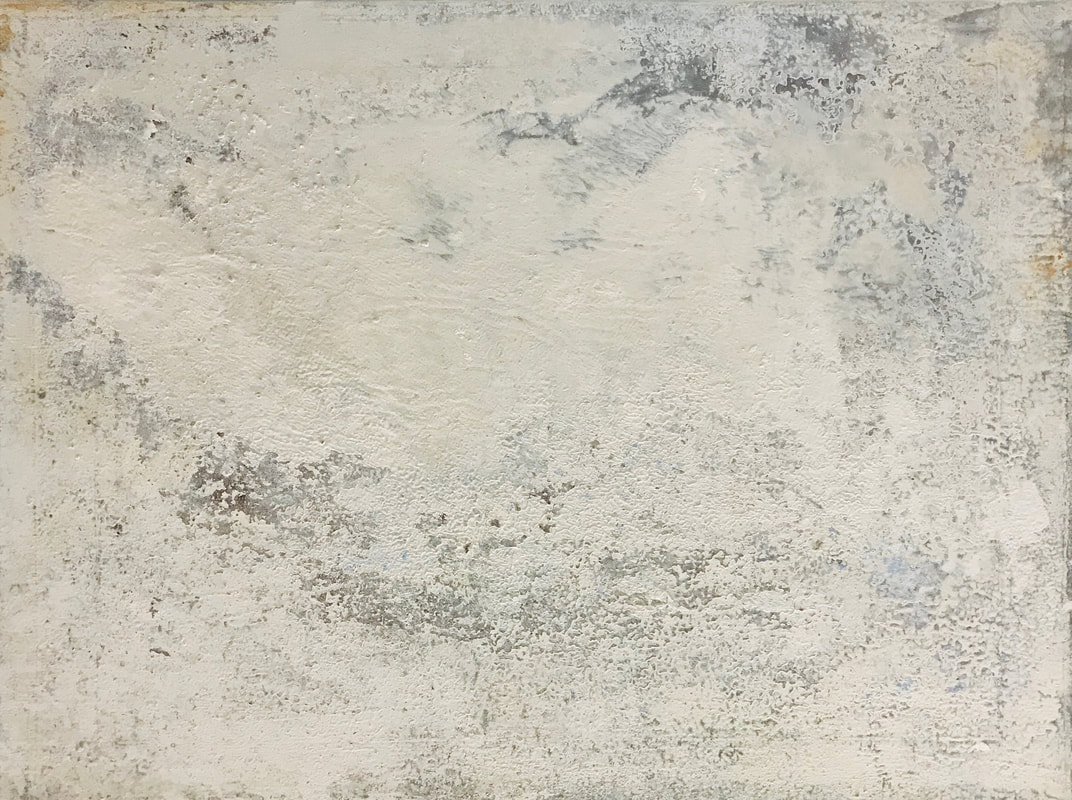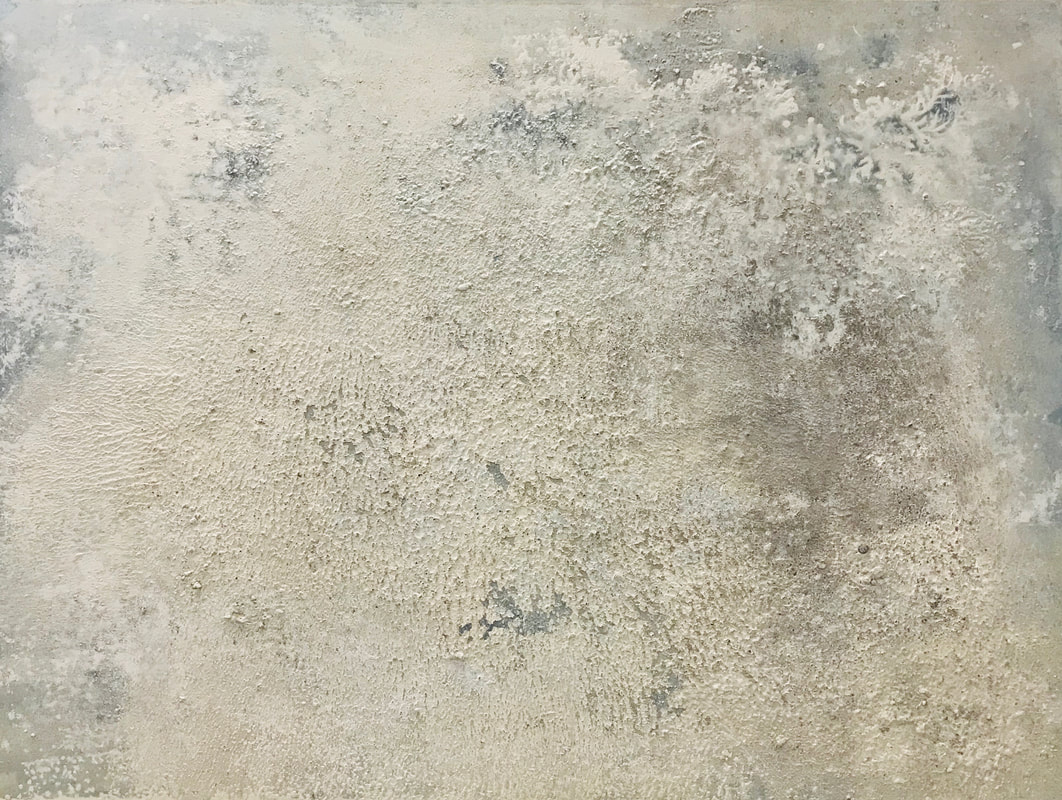|
How I work with plaster to create a "plaster on canvas" look: Question: I've been reading some of your blog posts and hope you can answer a few questions for me. I love to create art for myself. And living in quarantine for so long, the desire to create art is stronger than ever! I'm very interested in creating a 'plaster on canvas' look. Where it just looks like very thick swipes of plaster. There is no where to attach a photo in this email, but I'll add a links to show you what I mean. A few of your posts talk about using plaster, but I'm still left with a few questions and I'm hoping you can help guide me in the right direction a bit. (Of course I totally understand if, for whatever reason, you are unable to do so!). 1. Should I use canvas, or should I just use plywood? I'm fine with using either, but not sure which is the best option. It seems wood would be better because it doesn't move or stretch, but will the plaster apply easily and stick to it? 2. What is the "gel" you refer to in mixing with plaster to make it more elastic? Any specific brand? 3. I worry about the plaster breaking or getting brittle after the fact. Will using a gel and applying it to plywood rather than canvas help? From what I gather, it seems those two would go a long way to help, but I've never done this before so hoping to get confirmation :) 4. Should I seal with anything after the plaster has dried? 5. And finally, should I be using something else to achieve the look I'm going for? Thank you so much in advance for your time!! These are some of the looks I'm going for: https://www.singulart.com/en/artworks/andreas-anastasis-i-so-lat-ed-split-canvas-668105 https://www.houzz.com/pvp/yan-canvas-art-60x30-prpv-pv~140037406?m_refid=PLA_HZ_140037406_10390225659&device=c&nw=g&gclid=EAIaIQobChMIyurtiYqZ6wIV8R-tBh399wOhEAQYCiABEgLCkPD_BwE https://www.luxdeco.com/collections/designer-wall-art/products/oland-painting https://www.luxdeco.com/collections/designer-wall-art/products/lm-zhous-bleached-painting First of all, let me just say how happy I am you are painting during quarantine, and that you are wanting to incorporate plaster into your paintings.
Saying how much I love working with plaster is a serious understatement. I love plaster for its versatility, contemporary, minimalist aesthetic, and the fact that it costs a fraction of the cost compared to the products found at the art store. Question 1: Should I use canvas, or should I just use plywood? I'm fine with using either, but not sure which is the best option. It seems wood would be better because it doesn't move or stretch, but will the plaster apply easily and stick to it? Answer: Let's compare painting on a Canvas VS Plywood: The advantage of using a regular canvas is that it is readily available. Painting on plywood might mean you have to special order the canvas. The disadvantage is that a regular canvas is a flexible surface, so the plaster has a tendency to crack and break as the plater dries and the canvas moves. The thicker the layers, the more those layers run the risk of cracking and breaking off. The advantage of using plywood is that it is a solid surface. It does not move or stretch, therefore it prevents the plaster from cracking. The main challenge of working on plywood is that the plaster has a hard time adhering to the surface. You can work around this challenge by getting your canvas wrapped in cotton canvas fabric to ensure the plaster adheres to the plywood surface. I used this technique for this large canvas: https://www.samanthadasilva.com/blog/large-scale-commission-painting-complete Wether you use a regular canvas or a plywood canvas, I would recommend mixing either gel or paint into your plaster to make your mixture flexible, and to make sure that the plaster texture sticks to the canvas. Having worked on both types of canvases, I reccomend working on plywood for anything larger than a 30" x 40" or 36" x 48". Question 2: What is the "gel" you refer to in mixing with plaster to make it more elastic? Any specific brand? Answer: I use Gloss Gel Medium (my favorite brand is Liquitex) to mix with plaster to give it more flexibility and to make sure that the plaster will stick to the canvas. Question 3: I worry about the plaster breaking or getting brittle after the fact. Will using a gel and applying it to plywood rather than canvas help? From what I gather, it seems those two would go a long way to help, but I've never done this before so hoping to get confirmation :) Answer: Using the gel will make the plaster more malleable and sticky. Mix 50% Plaster + 50% Gel If you don't have gel, or want to forgo the gel, you can still make your plaster flexible & sticky by mixing 50% Plaster + 50% Acrylic Paint. Since gel is ultimately a binder (acrylic paint before it gets a color pigment added to it), it will also do the trick. Question 4: Should I seal with anything after the plaster has dried? Answer: I recommend using acrylic varnish (My favorite brand is Liquitex Gloss Varnish) to seal the plaster on the canvas once the plaster has dried. The plaster is quite porous (aka "thirsty") so be prepared to use a fair amount of varnish to "seal" the plaster layer. Allow the varnish to work into all of the nooks and crannies of the surface to make sure the plaster will stick. Question 5: And finally, should I be using something else to achieve the look I'm going for? Answer: You may have already noticed that in the first image you shared, the artist used cotton fabric not plaster to achieve the look. If you want to achieve a similar look, I would recommend adhering the fabric with acrylic paint or gel and paint over it once its dry. For more information on how I work with plaster, check out these blog posts: https://www.samanthadasilva.com/blog/regular-plaster-vs-pink-plaster https://www.samanthadasilva.com/blog/using-plaster-to-create-texture https://www.samanthadasilva.com/blog/how-to-modelling-paste-vs-plaster Comments are closed.
|
This blog was created to share my belief that the art-making process is a catalyst for transformation and personal empowerment. I am living proof.
Categories
All
|


